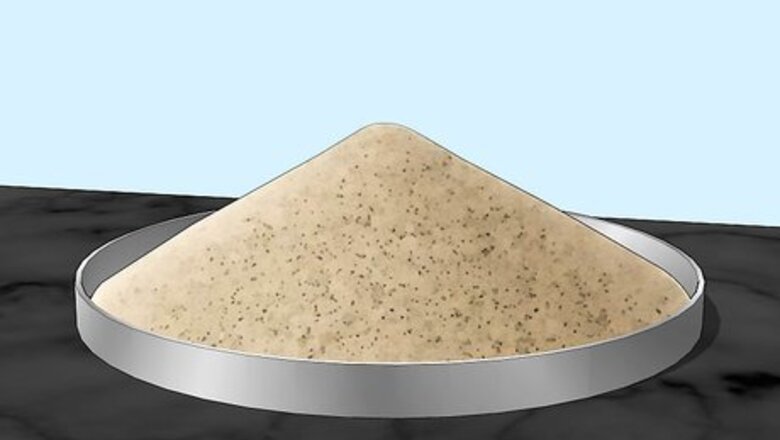
views
Using a Furnace or Kiln
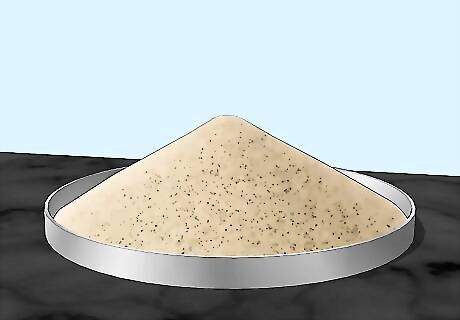
Obtain silica sand. Also called quartz sand, silica sand is the primary ingredient in making glass. Glass without iron impurities is sought for clear glass pieces, as the iron will cause the glass to appear greenish when present. Wear a face mask if handling extremely fine-grain silica sand. If inhaled, it can irritate the throat and lungs. Silica sand is available from online retailers. It is fairly cheap - small quantities shouldn't cost more than 20 dollars. If you want to operate on an industrial scale, specialty retailers can offer competitive rates on large orders - sometimes lower than $100 per ton. If it is not possible to find sand sufficiently free of iron impurities, their tinting effect can be countered by adding small amounts of manganese dioxide. Or, if you want greenish glass, leave the iron in!
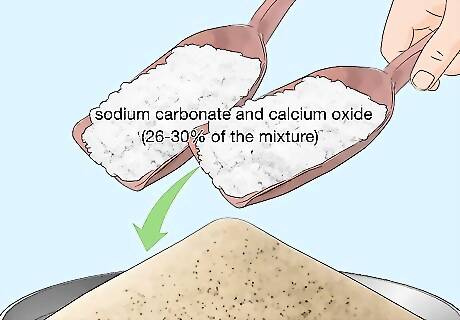
Add sodium carbonate and calcium oxide to the sand. Sodium carbonate (commonly called washing soda) lowers the temperature necessary to make glass commercially. However, it permits water to pass through the glass, so calcium oxide, or lime, is added to negate this property. Oxides of magnesium and/or aluminum may also be added to make the glass more durable. Generally, these additives take up no more than 26 to 30 percent of the glass mixture.
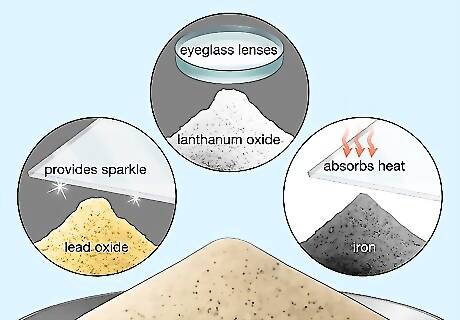
Add other chemicals, depending on the glass's intended purpose. The most common addition for decorative glass is lead oxide, which provides the sparkle in crystal glassware, as well as the softness to make it easier to cut and also lowers the melting point. Eyeglass lenses may contain lanthanum oxide because of its refractive properties, while iron helps glass absorb heat. Lead crystal can contain up to 33 percent lead oxide; however, the more lead oxide, the more skill required to shape the molten glass, so many lead crystal makers opt for less lead content.
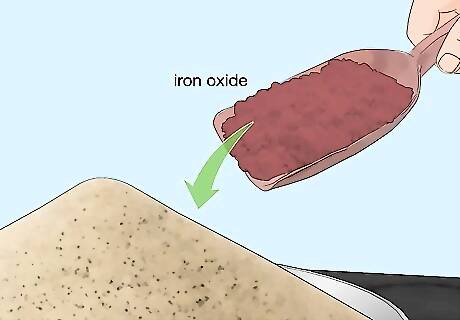
Add chemicals to produce a desired color in the glass, if any. As noted above, iron impurities in quartz sand make glass made with it appear greenish, so iron oxide is added to increase the greenish tint, as is copper oxide. Sulfur compounds produce a yellowish, amber, brownish or even blackish tint, depending on how much carbon or iron is also added to the mixture.
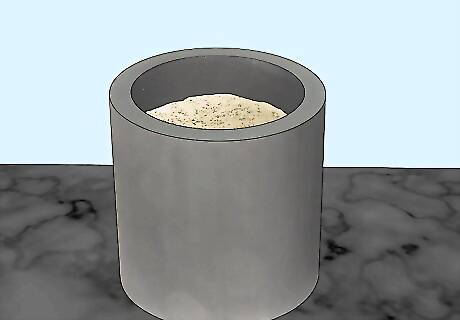
Place the mixture in a good heat-resistant crucible or holder. The container should be able to withstand the extremely high temperatures within the kiln - depending on your additives, your glass mixture may melt at a range of temperatures between 1,500 and 2,500 degrees Celsius. Your container should also be easily grasped with metal hooks and poles.
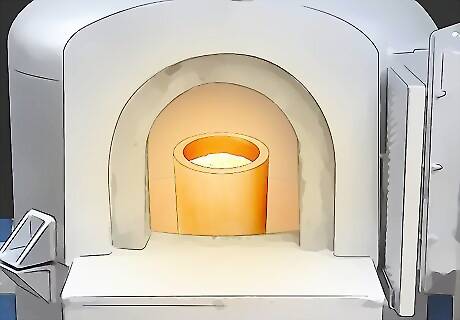
Melt the mixture into a liquid. For commercial silica glass, this is done in a gas-fired furnace, while specialty glasses may be created using an electric melter, pot furnace or kiln. Quartz sand without additives becomes glass at a temperature of 2,300 degrees Celsius (4,172 degrees Fahrenheit). Adding sodium carbonate (soda) reduces the temperature needed to make glass to 1,500 degrees Celsius (2,732 degrees Fahrenheit).
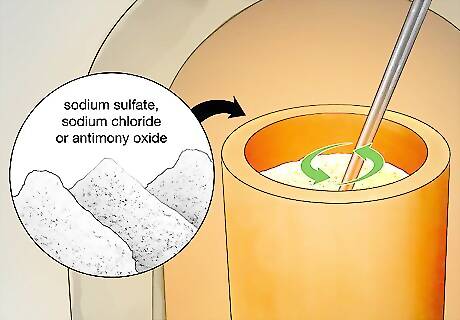
Homogenize and remove bubbles from the molten glass. This means stirring the mixture to a consistent thickness and adding chemicals such as sodium sulfate, sodium chloride or antimony oxide.
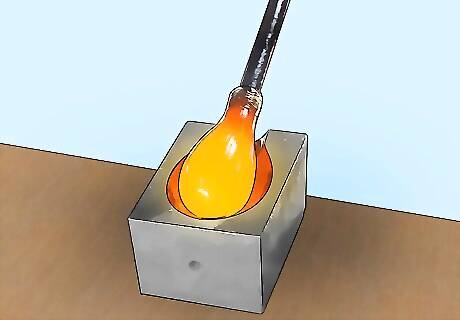
Shape the molten glass. Shaping the glass can be done in one of several ways: The molten glass can be poured into a mold and let cool. This method was used by the Egyptians, and it is also how many lenses are created today. A large amount of molten glass can be gathered at the end of a hollow tube, which is then blown into while the tube is turned. The glass is shaped by the air entering the tube, gravity pulling on the molten glass and whatever tools the glassblower uses to work the molten glass. The molten glass can be poured into a bath of molten tin for support and blasted with pressurized nitrogen to shape and polish it. Glass made by this method is called float glass, and it is how glass panes have been made since the 1950s. EXPERT TIP Bicycle Glass Bicycle Glass Glassblowing Experts Bicycle Glass Co. was founded in 2016 by David Royce and Michael Boyd, two professional glass experts. Bicycle Glass is primarily a lighting company, committed to quality, sustainability, and affordability. All Bicycle Glass products are made of high-quality, recycled glass and are hand-blown by a dedicated team of artisans. The studio is committed to reducing its carbon footprint by conserving energy in all of its production. Using renewable wind energy to offset all electricity usage, the studio is actively working toward the goal of carbon neutrality. Bicycle Glass believes that high-quality, handmade glass products should be within reach for everyone. Bicycle Glass Bicycle Glass Glassblowing Experts You can create a wide variety of objects by pouring molten glass into molds. This process is called glass casting; you carefully pour the molten glass from the furnace into the mold of your choice, then let it cool and anneal slowly. The most popular applications for this technique are glass sculptures and lighting fixtures with unique designs.
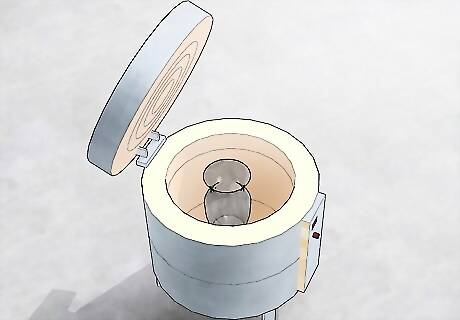
Slowly cool the glass in a kiln. This process is called annealing, and it removes any stress points that may have formed in the glass during cooling. Glass that has not been annealed is significantly weaker. Once this process is completed, the glass can then be coated, laminated or otherwise treated to improve its strength and durability. The precise temperature for annealing can vary based on the precise composition of the glass from as low as 750 degrees Fahrenheit to as high as 1000 degrees Fahrenheit. The rate at which the glass must cool may also change - generally, larger pieces of glass must cool more slowly than smaller pieces. Research proper annealing methods before beginning. A related process is tempering, in which shaped and polished glass is placed in an oven heated to at least 600 degrees Celsius (1,112 degrees Fahrenheit) and then quick-cooled ("quenched") with blasts of air at high pressure. Annealed glass breaks into shards at 6,000 pounds per square inch (psi), while tempered glass breaks into small pieces at no less than 10,000 psi and usually at around 24,000 psi.
Using a Charcoal Barbecue
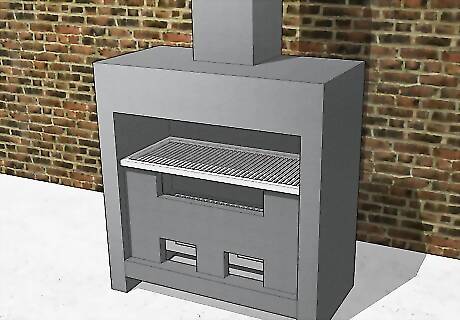
Prepare a makeshift furnace from a charcoal barbecue grill. This method uses the heat generated by a large charcoal fire to melt silica sand into glass. The materials used are relatively cheap and common - theoretically, all you'll need is a short trip to the hardware store to be ready to make your own glass. Use a large charcoal barbecue grill - standard-size "dome" models work well. Use the thickest, sturdiest grill available. Most charcoal grills will have a vent on the bottom - open this vent. Even at the extremely hot temperatures reached in this method, it can be difficult to melt silica sand in a grill. Add a small quantity (about 1/3 to 1/4 of your sand's volume) of laundry soda, lime, and/or borax to your sand before you begin. These additives lower the sand's melting temperature. If you're going to blow your glass, have a long, hollow, metal tube handy. If you're going to pour it into a mold, prepare your mold beforehand. You want a mold that won't burn or melt from the heat of molten glass - graphite works well.

Know the dangers of this method. This method will push a conventional barbecue past its normal temperature limits - so hot that it's even possible to melt the grill itself. This method can cause severe injury or death if it's attempted recklessly. Proceed with caution. Have a large quantity of dirt or sand or a fire extinguisher rated for high temperatures on hand to smother the fire if needed.
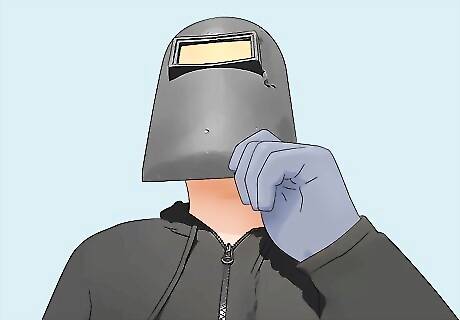
Take every possible precaution to protect yourself and your property from the high heat. Attempt this method on a dirty or sandy surface outdoors with plenty of space. Performing this on a bare concrete surface not covered with sand or dirt could result in the concrete explosively spalling if hot molten glass is dropped onto it. Don't use any irreplaceable equipment. Stand clear of the grill while you're heating the glass. You should also wear as much of protective clothing as possible, including: Heavy duty oven gloves or mitts A welder's mask A heavy duty apron Heat-resistant clothing
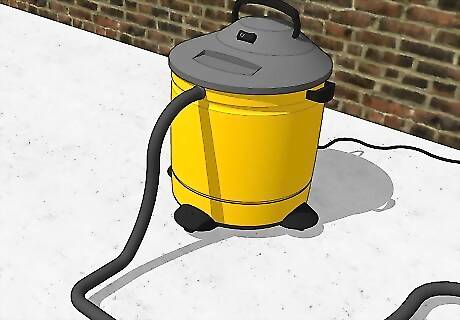
Get a shop vacuum with a long hose attachment. Using duct tape or another method, angle its hose so that it is blowing directly into the bottom vent without touching the grill's main body. You may want to fasten the hose to one of the grill's legs or wheels. Keep the main vacuum unit as far away from the grill as possible. Make sure the hose is secure and will not move - if it comes loose while you're making your glass, you should not approach the grill if it's extremely hot. Turn the vacuum on to test your hose positioning. An accurate hose will blow directly into the vent.
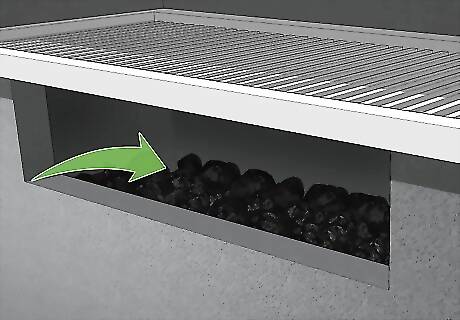
Line the inside of your grill with charcoal. Use more charcoal than you would for grilling meat. Successful results have been achieved by filling the grill nearly to the brim. Place a cast-iron pot or crucible containing your sand in the center of the grill, surrounded by charcoal. Hardwood (or "lump") charcoal burns hotter and quicker than briquette charcoal, making it a better choice if it's available.
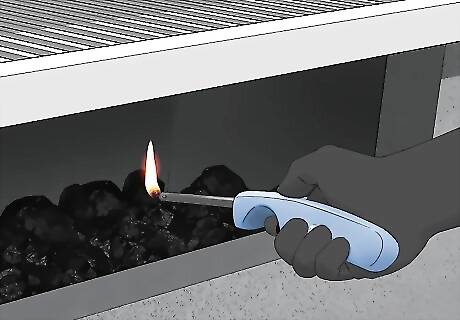
Light the charcoal. Consult the charcoal's packaging to know whether your charcoal can be lit directly or whether it requires lighter fluid. Allow the flames to spread evenly.
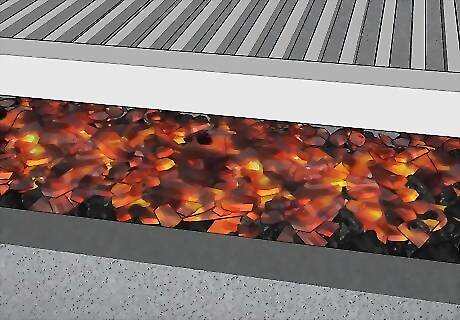
Wait for the charcoal to get hot. When the charcoals are grayish and emanating an orange glow, they're ready. You should be able to feel the heat from simply standing near the grill.
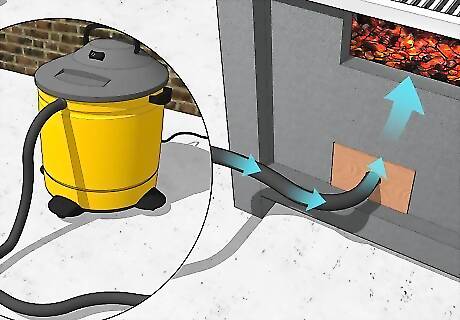
Turn the shop vac on to introduce air to the charcoal. Charcoal fed with air from the bottom can burn extremely hot (up to 2,000 degrees Fahrenheit.) Beware - large flame-ups may occur. If you're still not able to reach high enough temperatures, experiment with replacing the lid while introducing air through the vent.
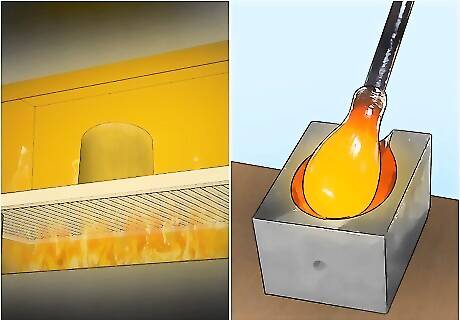
When your glass is molten, very carefully use metal implements to remove and shape it. Because of the low temperature of the grill method, the molten glass may be stiffer and harder to work than glass from a kiln. Shape it with a tube, mold, or other tools as you normally would.




















Comments
0 comment